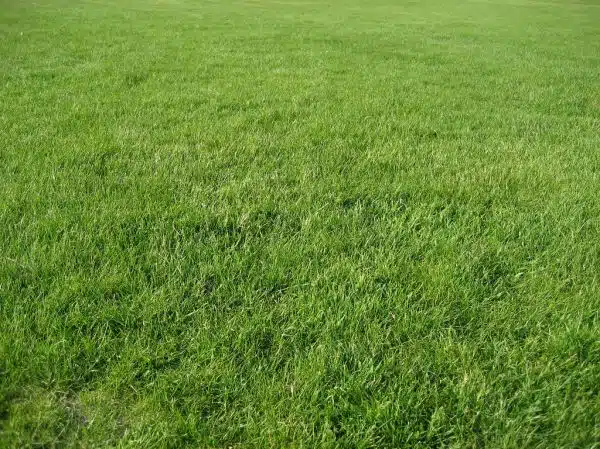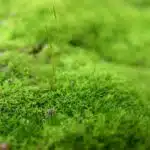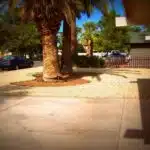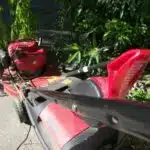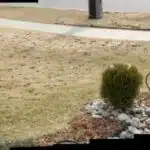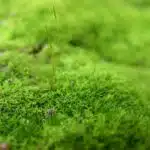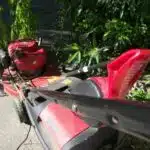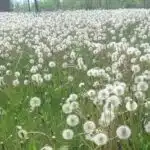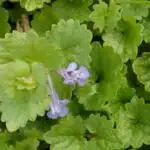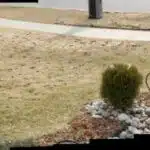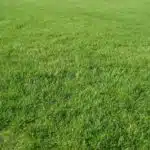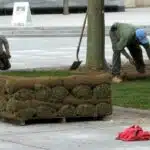As a lawn care specialist, I understand that maintaining a pristine yard is not always easy. One of the common challenges that homeowners face is dealing with grass growth in unwanted areas. Whether you want to clear out grass from your driveway or create a new gardening bed, getting rid of grass can be a time-consuming and frustrating task.
Fortunately, there are several effective methods you can use to eliminate grass without causing damage to your lawn or garden beds. In this article, we will explore some of the best techniques for removing grass from various areas around your property. From using natural herbicides to applying mulch and sheeting, we will provide you with practical tips on how to get rid of grass effectively and efficiently.
Understanding Grass Growth And Spread
Grass growth prevention and spread control are essential aspects of lawn care. Understanding how grass grows and spreads is crucial to maintaining a healthy lawn. Grass is a perennial plant that grows from underground stems called rhizomes, which can spread quickly and form new plants. Grass also reproduces through seeds, which can be dispersed by wind, animals, or humans.
To prevent grass from spreading uncontrollably, it’s important to minimize the use of nitrogen fertilizers and water the lawn deeply but infrequently. Mowing regularly will also help prevent grass from spreading since it removes the stems and leaves that produce new plants. Additionally, removing weeds as soon as they appear will prevent them from competing with your grass for nutrients and water.
Grass growth prevention and spread control require proper maintenance techniques based on the type of grass in your lawn. Some grasses grow faster than others, while some are more resistant to drought or pests. Identifying the type of grass you want to remove is essential before proceeding with any removal method.
Identifying The Type Of Grass You Want To Remove
The first step in removing unwanted grass is to identify the type of grass present. Proper identification of the grass will determine the best approach for its removal. Weeds are often mistaken for grass, but there are some key differences that can be used to differentiate them. For example, grasses tend to have a fibrous root structure, while weeds often have a shallow, branching root system.
Identifying Grasses
As a lawn care specialist, identifying grasses is an essential skill to have when planning to remove unwanted or invasive species. Grass identification tips are crucial in distinguishing between common grass types and locating the areas requiring treatment. It is imperative to identify the type of grass you want to remove before selecting a herbicide or any other removal method.
Common grass types to look out for include Kentucky bluegrass, Bermuda grass, and fescue. Kentucky bluegrass has a bright green hue with boat-shaped leaves that are folded at the base. Bermuda grass produces a dense mat-like turf with pointed leaf blades that grow from the stem’s center. Fescue has fine and narrow leaves that are flat and parallel-sided. Identifying these grass types will help determine which removal method is effective.
Differentiating between different grass species can be challenging for the untrained eye; however, there are several key characteristics to look out for when identifying them. These include the color, texture, blade shape, and growth habit of the plant. By paying close attention to these features during your assessment, you will be able to accurately identify the type of grass you want to remove and take appropriate measures accordingly.
Differentiating Weeds
Identifying the type of grass you want to remove is a crucial step in maintaining a healthy lawn. However, it’s not just about knowing the different types of grasses; you also need to differentiate between grasses and weeds. Common misconceptions can lead to confusion when it comes to differentiating weeds from grasses, which can result in ineffective treatment methods.
One common misconception is that all plants with broad leaves are weeds. While some weed species do have broad leaves, there are also many types of grasses with wide blades. Plant anatomy is an essential factor in distinguishing between weeds and grasses. Understanding the leaf shape, growth habit, and root system will help identify whether a plant is a weed or a grass.
Another aspect to consider when differentiating between weeds and grasses is their texture. Weeds typically have coarser and rougher textures than most grass species. Additionally, weed growth habits differ from those of most turfgrass species, such as growing taller or at different rates. By understanding these differences in plant anatomy and texture, lawn care specialists can accurately identify weed species and choose the appropriate removal methods for effective weed control.
Preparing Your Tools And Materials
Before starting your lawn care project, it is important to prepare your tools and materials. This step ensures that you have everything needed to complete the task safely and effectively. Choosing tools and gathering materials should be done in advance to avoid any delays during the process.
When choosing tools, consider the size of your lawn and the type of grass you are trying to remove. Common tools for removing grass include shovels, rakes, and weed whackers. You may also need a gardening knife or saw for more stubborn areas. Gathering materials such as compost or mulch will help with soil health after the grass has been removed.
Safety precautions and proper equipment handling are essential during this process. Wear safety goggles, gloves, and sturdy shoes to protect yourself from debris while working. Make sure your tools are in good condition before use, with no cracks or defects that could cause harm. Properly store equipment when not in use to prevent accidents.
Transitioning into the subsequent section about using natural herbicides, it is important to note that preparing your tools and materials properly will make this step much easier. By having all necessary items on hand, you can apply natural herbicides safely and efficiently without worrying about running out of supplies or damaging surrounding plants.
Using Natural Herbicides
- Natural herbicides are a great alternative to chemical-based products for lawn care and weed control.
- It is important to understand the different types of natural herbicides available, as well as their active ingredients, effects, and application methods.
- Applying natural herbicides requires being mindful of the type of grass, weeds, and climate of the area being treated.
- Proper application of natural herbicides may require multiple treatments over time to achieve desired results.
- The benefits of natural herbicides include reduced environmental impacts and safety for humans, animals, and plants.
- Natural herbicides are an effective way to get rid of grass and weeds without over-applying chemical-based products.
Understanding Natural Herbicides
Picture yourself in a beautiful backyard, surrounded by lush greenery and blooming flowers. However, among this beauty lies an unsightly problem – pesky grass that just won’t go away. As a lawn care specialist, it’s my job to find effective solutions to such issues. One of the most eco-friendly alternatives to traditional herbicides are natural ones that can work wonders in getting rid of unwanted grass.
Natural herbicides have gained popularity in recent years due to their effectiveness and eco-friendliness. These herbicides contain ingredients derived from plants such as vinegar, clove oil, or citric acid which target specific weeds without harming other plants in the vicinity. Additionally, natural herbicides are safer for pets and humans as they do not contain harmful chemicals that could cause harm if ingested or absorbed through skin contact.
The effectiveness of natural herbicides depends on several factors including the type of weed being targeted, application technique, and timing of application. It’s important to use these products correctly to achieve the desired results. Overall, understanding how natural herbicides work can help you maintain a healthy and aesthetically pleasing lawn without causing any harm to the environment or your health.
Applying Natural Herbicides
As a lawn care specialist, I understand that many homeowners prefer DIY alternatives to traditional herbicides. Using natural herbicides is not only eco-friendly, but it’s also safer for pets and humans. However, the effectiveness of these products depends on proper application techniques.
When applying natural herbicides, it’s important to follow the manufacturer’s instructions carefully. The type of weed being targeted, the timing of application, and weather conditions can all affect the product’s effectiveness. For example, some natural herbicides work best when applied during sunny weather while others require moisture to be effective.
Another key factor when applying natural herbicides is to avoid overspraying or spraying on desirable plants. It’s important to use these products sparingly and selectively target weeds rather than spraying indiscriminately. By following these tips, you can achieve an aesthetically pleasing lawn without causing any harm to the environment or your health.
Benefits Of Natural Herbicides
Moving on, let’s delve into the benefits of natural herbicides. One of the main advantages of using organic herbicides is that they are safer for the environment and human health. Unlike chemical herbicides, which can persist in soil and water systems, natural herbicides break down quickly and do not leave harmful residues. This makes them ideal for use in gardens, parks and other public spaces where children and pets play.
Another benefit of natural herbicides is that they can be just as effective as their chemical counterparts when used correctly. Many natural ingredients such as vinegar, salt or citrus oils have been found to be effective at killing weeds and preventing their growth. These ingredients not only work well but are also cost-effective compared to chemical alternatives.
Lastly, using natural herbicides can promote a healthier lawn by enhancing its overall ecosystem. By eliminating weeds naturally instead of chemically, beneficial organisms like earthworms and microbes are not harmed in the process. This can improve soil quality and create a more sustainable lawn over time. Overall, incorporating natural herbicides into your lawn care routine has many benefits that go beyond just weed control.
In conclusion, knowing the benefits of organic herbicides will help you make informed decisions about their use while taking care of your lawn in a responsible manner. When applying these products, remember to follow safe application techniques to ensure maximum effectiveness while minimizing harm to non-target plants and animals in your yard or garden. By doing so, you can have a beautiful lawn while also promoting environmental stewardship efforts.
Applying Chemical Herbicides
While natural herbicides can be effective in getting rid of grass, there are alternative methods available that may be more suitable for your specific situation. One such method is using chemical herbicides. These products are designed to kill unwanted vegetation and can be found at most lawn care supply stores. However, it is important to follow safety precautions when using these products as they can be harmful if not used properly.
When applying chemical herbicides, it is crucial to wear protective clothing and gear such as gloves, goggles, long sleeves, and pants. It is also important to read the instructions carefully and apply the product only as directed. Overuse can harm not only the grass but other plants nearby or even animals that come into contact with it. Additionally, some chemical herbicides may require a permit or license for use so it is important to check with local authorities before beginning.
If you prefer a more hands-on approach, hand-digging the grass may be an option for you. This method involves physically removing the grass by digging up its roots with a shovel or hoe. This process requires patience and persistence but can be effective in completely removing the grass without harming surrounding plants or animals. However, it is important to note that this method may not be practical for larger areas and may require additional tools such as a tiller or sod cutter.
Transition: While chemical and natural herbicides are popular options for getting rid of grass, some people prefer a more traditional approach of hand-digging the grass. In the following section we will explore this method in detail and provide tips on how to effectively remove grass by hand without damaging your lawn or garden.
Hand-Digging The Grass
Hand-digging is a traditional method of getting rid of grass. It involves physically removing the plants and their roots from the ground using hand tools such as shovels, trowels, and spades. Hand-digging has its benefits and challenges.
Benefits of hand-digging include being able to target specific areas for removal, ensuring that no desirable plants are harmed in the process. Additionally, it provides an opportunity to improve soil quality by adding organic matter during the digging process. Furthermore, it can be a good form of exercise and stress relief for some individuals.
However, hand-digging also has its challenges. It is time-consuming and labor-intensive. Moreover, it may not be effective in removing all parts of the grass roots which can lead to regrowth. In addition, if done improperly, it can cause soil compaction or damage to other plants in the area.
In summary, hand-digging is a viable option for getting rid of grass but requires significant effort and patience. It is best suited for small areas or when precision is necessary. For larger areas or where time constraints are present, smothering with mulch may be a more suitable option.
Smothering The Grass With Mulch
After hand-digging grass, smothering it with mulch is a great way to get rid of it. Mulching benefits are numerous, including suppressing weed growth, retaining moisture in the soil, and providing nutrients to plants as they break down. When it comes to smothering grass with mulch, there are two techniques you can use: sheet mulching and using organic mulch.
Sheet mulching involves layering cardboard or newspaper over the grass and then adding a thick layer of compost or other organic matter on top. This technique is effective because the layers block sunlight from reaching the grass, which eventually kills it. Sheet mulching also helps improve soil quality by increasing organic matter and promoting beneficial microorganisms.
The second technique for smothering grass with mulch is simply applying an organic material like leaves or wood chips directly on top of the grass. While not as effective as sheet mulching, this method still provides some benefits. The organic material will decompose over time and enrich the soil below while also suppressing weed growth.
By using these two techniques – sheet mulching and applying organic material – you can effectively smother grass and improve your lawn’s overall health. In the next section, we will discuss how to take your lawn care to the next level by applying sheet composting for even more benefits.
Applying Sheet Composting
If you’re looking for a way to get rid of grass without using harmful chemicals, sheet composting is an excellent option. This technique involves layering organic materials on top of the grass, which will eventually smother it and turn it into nutrient-rich soil. Sheet composting is one of the easiest and most effective composting techniques for beginners.
One of the benefits of sheet composting is that it allows you to recycle yard waste and kitchen scraps into valuable soil amendments. Instead of sending your organic waste to the landfill, you can use it to improve the health of your lawn or garden. Additionally, sheet composting doesn’t require any special equipment or skills – all you need is a little bit of space and some patience.
To get started with sheet composting, simply lay down a layer of cardboard or newspaper over the grass. Then add layers of organic materials such as leaves, grass clippings, kitchen scraps, and manure on top. Water the pile well and let nature do its work. Over time, the grass will die off and decompose, leaving behind rich soil that will support healthy plant growth.
By now you should have a good idea about sheet composting benefits for getting rid of grass in your lawn area! The next section will guide you through another effective technique called solarizing – this process helps kill off weeds or unwanted plants by using heat from sunlight.
Solarizing The Grass
When it comes to getting rid of grass, solarizing is a great option. This process involves covering the area with plastic to trap and intensify sunlight for several weeks, which kills off any vegetation underneath. The benefits of solarizing include being an organic and chemical-free method that allows soil organisms to remain intact, resulting in healthier soil for future planting.
The best time for solarizing is during the hottest months of the year, typically between June and August. This ensures that adequate heat is generated under the plastic cover, which accelerates weed elimination. It’s important to note that solarization works best on small areas of grass or weeds rather than large sections of lawn.
By taking advantage of solarization, you can eliminate unwanted grass and prepare your lawn for new landscaping projects. Next up, we’ll discuss how installing landscape fabric can further enhance your lawn’s appearance and health.
Installing Landscape Fabric
Once you have decided to get rid of grass, one of the most effective ways to do so is by installing landscape fabric. This is an ideal solution for those who want to prevent weeds from growing while also maintaining the aesthetic appeal of their garden or lawn. Landscape fabric benefits include reducing soil erosion, improving moisture retention, and preventing weed growth.
Installing landscape fabric can be a bit tricky, but following some installation tips will make it easier. First, start by clearing away any debris or rocks from the area where you plan on installing the fabric. Next, lay down a layer of gravel or sand to help with drainage and make sure that the ground is level. Once this is done, roll out the landscape fabric over the area and cut it to size using scissors or a utility knife.
To ensure that your landscape fabric installation lasts for a long time, make sure that you overlap each piece by at least 6 inches and secure it in place with landscape staples. Additionally, avoid planting too close to the edges of the fabric as this may cause it to tear over time. With these tips in mind, you can easily install landscape fabric and enjoy its many benefits.
By using landscape fabric as a way to get rid of grass, you are taking steps towards achieving an aesthetically pleasing garden or lawn without having to worry about constant maintenance. However, if you have already installed grass that needs removing before laying down landscape fabric, using a sod cutter can be an effective method for doing so without damaging your yard’s underlying soil.
Using A Sod Cutter
After installing the landscape fabric, it is time to consider removing the grass. Grass removal can be a tedious process, but it is necessary for starting your new lawn from scratch. There are several methods to get rid of grass, and one of them is using a sod cutter.
However, using a sod cutter requires renting equipment which can be expensive. It may not be a suitable option for those who want to save money or prefer DIY alternatives. If you do decide to use a sod cutter, make sure to follow the instructions carefully to avoid damaging your property or injuring yourself.
For those who want to save money and prefer DIY alternatives, there are other methods that you can try such as manual removal or using herbicides. Manual removal involves digging up the grass manually using shovels and other tools. Herbicides, on the other hand, involve applying chemicals that kill the grass over time. However, both methods require more time and effort compared to using a sod cutter.
If you have decided that renting equipment is the best option for you, then consider renting a skid steer or bobcat. These machines can make quick work of removing grass and are efficient in clearing large areas. Just make sure to follow safety guidelines when operating these machines and wear proper protective gear such as gloves and safety glasses. With these tips in mind, you’ll soon have your lawn ready for its new makeover!
Renting A Skid Steer Or Bobcat
Renting a Skid Steer or Bobcat is a practical option when it comes to grass removal. Renting is less expensive than purchasing equipment, and it saves you the trouble of maintaining and storing heavy machinery. It also allows you to choose the right equipment for your specific needs without committing to a long-term investment.
However, using heavy machinery requires strict adherence to safety precautions. Before operating a Skid Steer or Bobcat, make sure that you have undergone proper training on how to use the equipment. Wear the appropriate personal protective gear such as hard hats, gloves, and steel-toed boots. Check if the area around the work site is clear of debris and bystanders before starting the machine.
In summary, renting a Skid Steer or Bobcat can be an economical and efficient way of removing grass from your lawn. But before embarking on this task, remember that operating heavy machinery entails certain risks. Ensure your safety by undergoing proper training and following recommended precautionary measures.
Hiring A Professional Landscaper
When it comes to getting rid of grass, many homeowners may consider hiring a professional landscaper. While this may seem like an expensive option, there are actually many benefits to doing so. Firstly, a professional landscaper has the experience and knowledge to effectively remove unwanted grass and ensure that it does not grow back in the future. They also have access to specialized equipment and products that can make the process quicker and more efficient.
In terms of costs, the price of hiring a professional landscaper will vary depending on several factors such as the size of your lawn, the level of expertise required, and the type of equipment needed. However, it is important to keep in mind that investing in a professional service can ultimately save you money in the long run by preventing costly mistakes or damages that could occur if attempting to remove grass on your own.
Overall, while removing grass may seem like a daunting task, hiring a professional landscaper can provide numerous benefits for homeowners. Not only can they ensure that your lawn is properly taken care of, but they can also save you time and potential expenses down the line.
Moving forward, preventing grass from growing in unwanted areas requires careful planning and maintenance. While there are various methods to achieve this goal, some effective strategies include installing hardscapes such as walkways or patios, using mulch or ground covers instead of traditional turfgrass, and implementing regular weed control measures. By taking these steps proactively with the help of a professional landscaper if necessary, you can enjoy a beautiful yard without any unwanted surprises popping up.
Preventing Grass From Growing In Unwanted Areas
Grass control is an essential aspect of landscape design. It is crucial to prevent grass from growing in unwanted areas, as it can be unsightly and difficult to manage. There are several ways to prevent grass from growing in unwanted areas, including the use of herbicides, mulch, and ground covers.
One way to prevent grass from growing in unwanted areas is by using herbicides. Herbicides are chemicals that kill or inhibit the growth of plants. They can be applied directly to the grass or used as a pre-emergent treatment to prevent seeds from germinating. However, it is important to use herbicides safely and according to the manufacturer’s instructions.
Another method for preventing grass from growing in unwanted areas is by using mulch. Mulch is a layer of organic material that is spread over the soil surface around plants. It helps retain moisture in the soil, suppress weed growth, and improve soil structure. Additionally, mulch can add aesthetic value to your landscape design.
Lastly, ground covers are another option for preventing grass from growing in unwanted areas. Ground covers are low-growing plants that spread quickly and provide dense coverage. They require less maintenance than traditional turfgrass and come in a variety of colors and textures, making them an excellent addition to any landscape design.
With these options available for preventing grass from growing in unwanted areas, there’s no excuse not to have a beautiful lawn and garden! In the next section, we will discuss how maintaining a healthy lawn and garden can further enhance your landscape design.
Maintaining A Healthy Lawn And Garden
As we discussed in the previous section, preventing grass from growing in unwanted areas is an important step towards maintaining a healthy lawn and garden. However, if you already have grass growing where you don’t want it, there are several methods to get rid of it.
Firstly, one effective method is to use a hoe or shovel to dig up the grass along with its roots. Make sure to go at least 6 inches deep to ensure that all roots are removed. This method is best for small areas or patches of grass.
Another method is using herbicides, which can be applied directly onto the grass. It’s important to choose an herbicide that targets only grass and not other plants nearby. Follow the instructions on the product carefully and avoid applying on windy days.
Lastly, smothering the grass by covering it with a layer of newspaper or cardboard followed by mulch can also work effectively. This method takes longer but is more environmentally friendly than using chemicals.
As important as getting rid of unwanted grass may be, maintaining a healthy lawn and garden requires proper watering techniques and soil preparation. It’s crucial to water deeply but infrequently, allowing time for the water to penetrate deep into the roots instead of just shallowly wetting the surface. Additionally, soil preparation involves ensuring that your soil has adequate nutrients and drainage for your plants to thrive.
Three key ways to maintain a healthy lawn and garden:
- Test your soil regularly to determine its pH level and nutrient content.
- Use organic fertilizers such as compost or manure rather than chemical fertilizers that can harm beneficial organisms in your soil.
- Consider aerating your lawn annually to improve soil compaction and allow better water absorption.
By following these tips for getting rid of unwanted grass and maintaining a healthy lawn and garden through proper watering techniques and soil preparation, you’ll be well on your way towards achieving a lush, thriving outdoor space for years to come.
Conclusion
Grass can be a beautiful addition to any lawn or garden, but sometimes it can become too much of a good thing. Understanding the growth and spread of grass is crucial in removing it effectively. Identifying the type of grass you want to remove is also important before preparing your tools and materials for the job.
Using natural herbicides may be a more sustainable option for those who are environmentally conscious, while chemical herbicides are more effective but come with their own set of risks. Renting heavy machinery like a skid steer or bobcat may be necessary for larger areas, and hiring a professional landscaper can save time and ensure proper removal techniques.
Preventing grass from growing in unwanted areas requires ongoing maintenance such as regular mowing, edging, and mulching. Maintaining a healthy lawn and garden overall can also help prevent unwanted grass growth.
In conclusion, removing grass requires careful consideration of the type of grass and removal technique. Whether using natural or chemical herbicides, renting heavy machinery, or hiring a professional landscaper, there are options available to suit different needs. Ongoing maintenance is key in preventing future growth in unwanted areas. By understanding the growth and spread of grass and taking proactive steps towards maintenance, homeowners can achieve the desired look for their lawn or garden.
Image Credits
- “Grass” by eh3k (featured)

